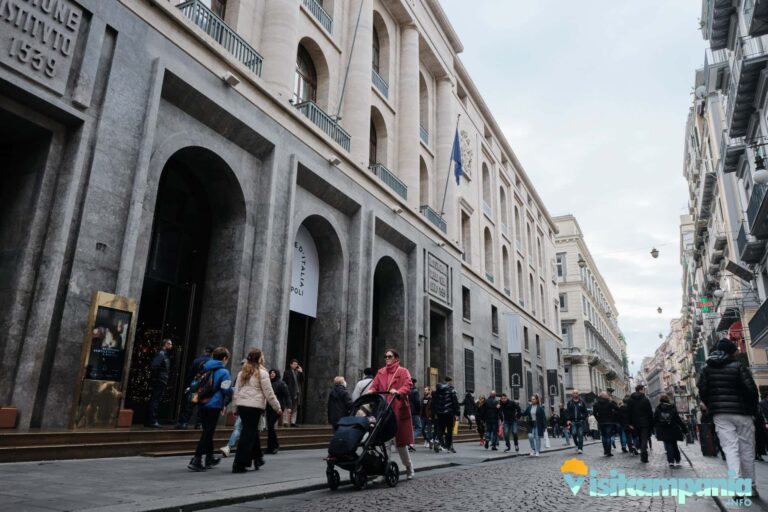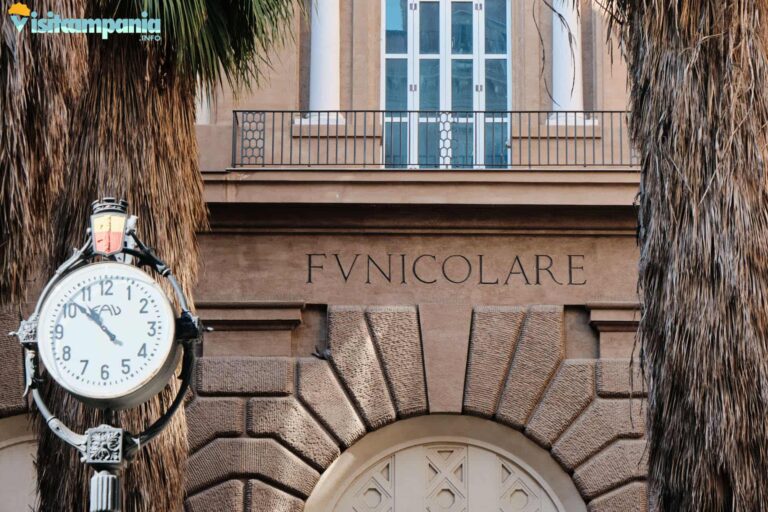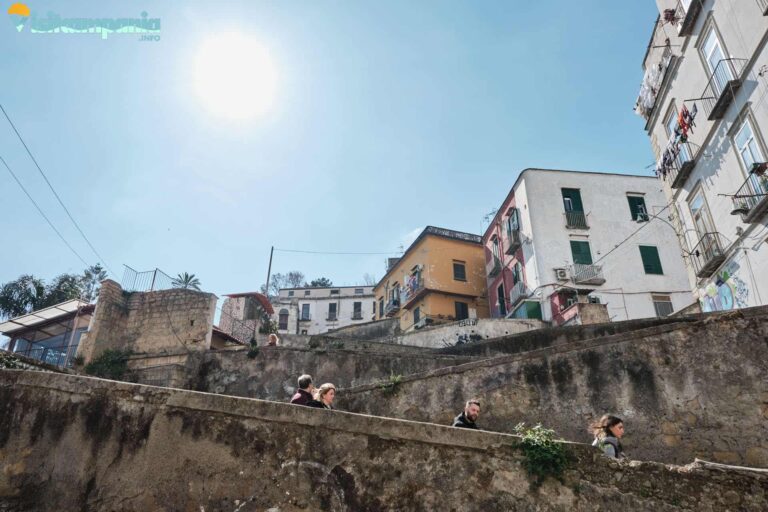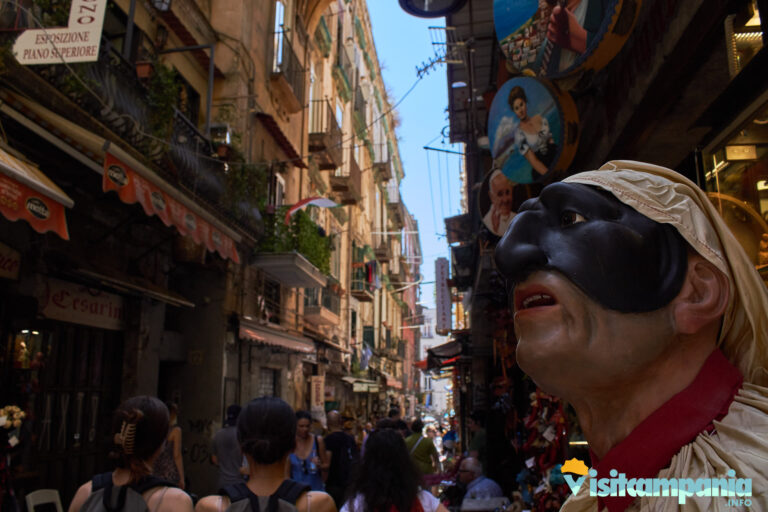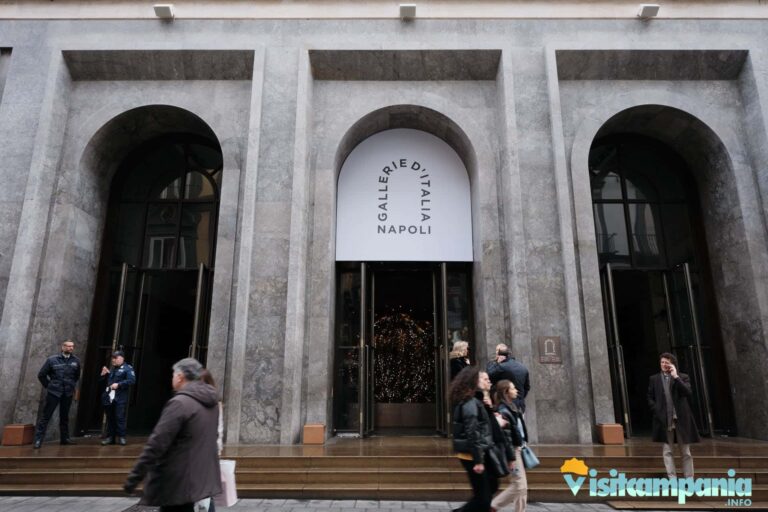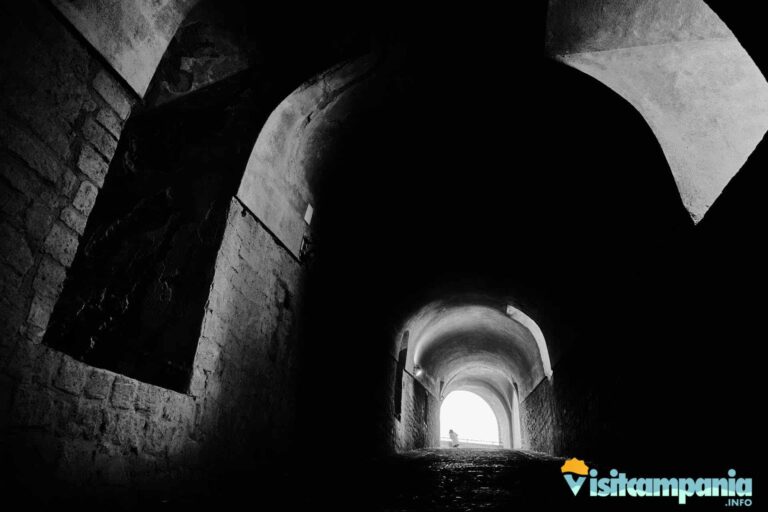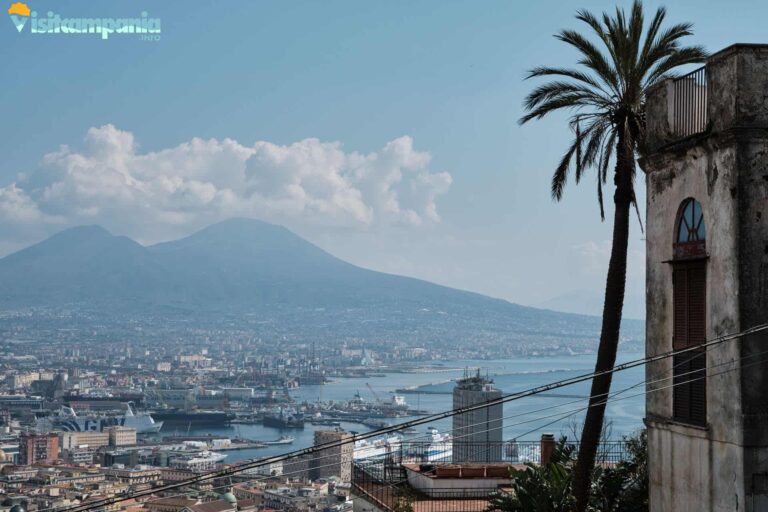Naples from above: a cultural and panoramic itinerary from Toledo to Vomero
The itinerary from Toledo to Vomero (and back) is a route that winds through the historic center of Naples, a UNESCO World Heritage Site and that will keep you busy for a whole day. In just over four kilometers you will explore places of great tourist interest, admire spectacular views and retrace the evolution of Neapolitan art from 1600 to today.
The stages of the itinerary, which starts from Toledo metro station and ends at the same point, are:
- Gallerie d’Italia Naples museum (average duration of the visit: two and a half hours);
- Central Funicular from via Toledo to Vomero (average expected duration and journey: fifteen minutes);
- Sant’Elmo Castle and Museum of the twentieth century (average duration of the visit: two and a half hours);
- Chartreuse and Museum of San Martino (average duration of the visit: three and a half hours);
- Pedestrian path of via Pedamentina from Vomero to Toledo (average travel time: twenty minutes);
By visiting these attractions and the places where they are located, you can:
- Get to know important and popular districts of the city such as the historic center on Via Toledo, the elegant Vomero on the homonymous hill and the Spanish quarters between Vomero and the lower city;
- Admire splendid views of the gulf, Vesuvius and Spaccanapoli along the Via Pedamentina and looking out from the walls of Sant’Elmo Castle;
- Retrace the history of Neapolitan art from 1600 to the present day through the collections housed in the three museums;
- Visit buildings of great artistic and historical importance that testify to the urban and social evolution of the city;
First stop: Gallerie d’Italia Naples

We start our itinerary from the Toledo metro station (line 1) on the central Via Toledo. The station, which is part of the Stazioni dell’Arte project and is also worth a visit, is easily accessible whether you are staying in the city or coming from outside. Walking south towards Plebiscito square, you reach the Gallerie d’Italia Napoli.
The imposing building dates back to the nineteenth century and was the seat of the Bourbon Ministries, first, and then of the Banco di Napoli. The Gallerie d’Italia Napoli offer, in a modern context, a fascinating journey into Neapolitan art from the seventeenth century to the present day. There are works by Caravaggio, Artemisia Gentileschi, Battistello Caracciolo, Gaspar Adriaensz van Wittel and other important artists linked to Naples in various ways. The museum also exhibits an important collection dedicated to modern and contemporary art, always linked to the city, and a collection of Attic and Magna Graecia ceramics. Finally, a rich calendar of events and temporary exhibitions makes the museum a new place to live every day.
Second stop: Central funicular
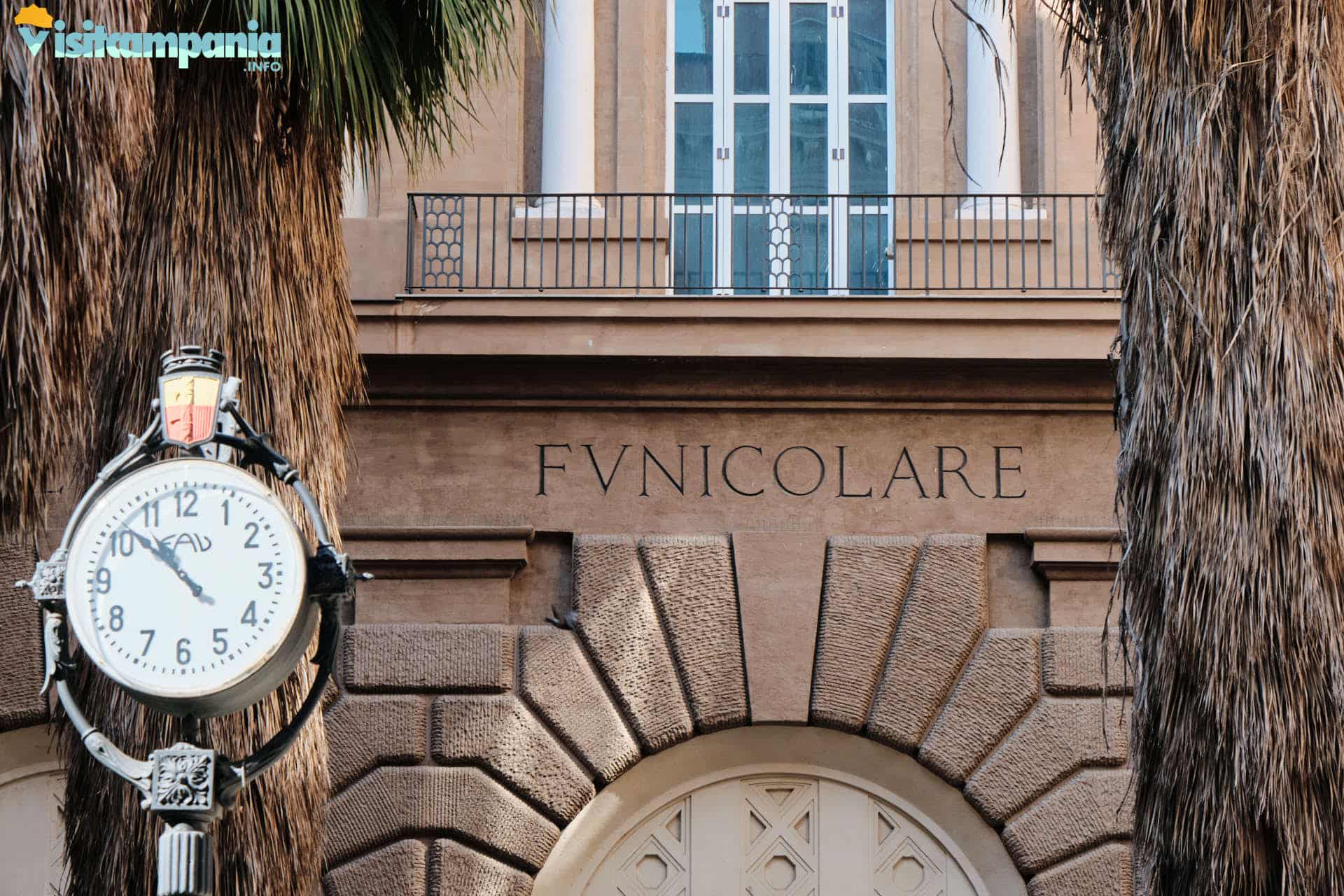
Leaving the Galleries, we resume the journey on Via Toledo, always heading south, and in a few steps we reach the Augusteo station of the Central funicular. The Central Funicular of Naples connects the historic center of the city to the Vomero district, where you will find numerous shops, restaurants and trendy bars. In addition, the area also offers many tourist attractions, such as Sant’Elmo Castle and the San Martino Chartreuse, next stops on this itinerary.
Built in 1928, it is about a kilometer long with two intermediate stations in addition to the terminus Augusteo and Fuga. In addition to the funicular journey itself, which always has an undoubted charm not only for children, of particular interest are the two final stations in Art Nouveau style. The service is active from 7 to 22 every day of the week.
Third stop: Sant’Elmo Castle

We continue the itinerary from Toledo to Vomero. From the exit of the Central Funicular station in Piazza Fuga, Sant’Elmo Castle is about 750 meters away and you can choose various routes. I advise you to take the staircase to the right on via Cimarosa then turn left on via Morghen and again to the right on the stairs of via Scarlatti in order to avoid as much as possible the busy streets and enjoy, however, the charm of the Vomero staircases.
Built in 1329,Sant’Elmo Castle has been used as a strategic point of defense of the city over the centuries. Today, the castle is open to the public and offers spectacular panoramic views of the city of Naples and the Gulf.
Inside the castle, in the parade ground, there is the Museum of the Twentieth Century dedicated to modern and contemporary Neapolitan art. We can, thus, resume that journey already undertaken in the Gallerie d’Italia where a similar collection is exhibited.
Finally, the castle often hosts temporary exhibitions and cultural events.
Fourth stop: Chartreuse and Museum of San Martino

Leaning against Sant’Elmo Castle we find the Chartreuse and Museum of San Martino. Built under the Angevin domination like the Castle, it is now home to an important museum whose collections, in part, integrate what has already been seen in the Gallerie d’Italia. As in the Galleries, in fact, we find exhibited works from the seventeenth century Neapolitan onwards with some artists in common as Artemisia Gentileschi and Battistello Caracciolo. Also noteworthy is the collection of art of presepe.
Fifth stop: via Pedamentina and return to Toledo
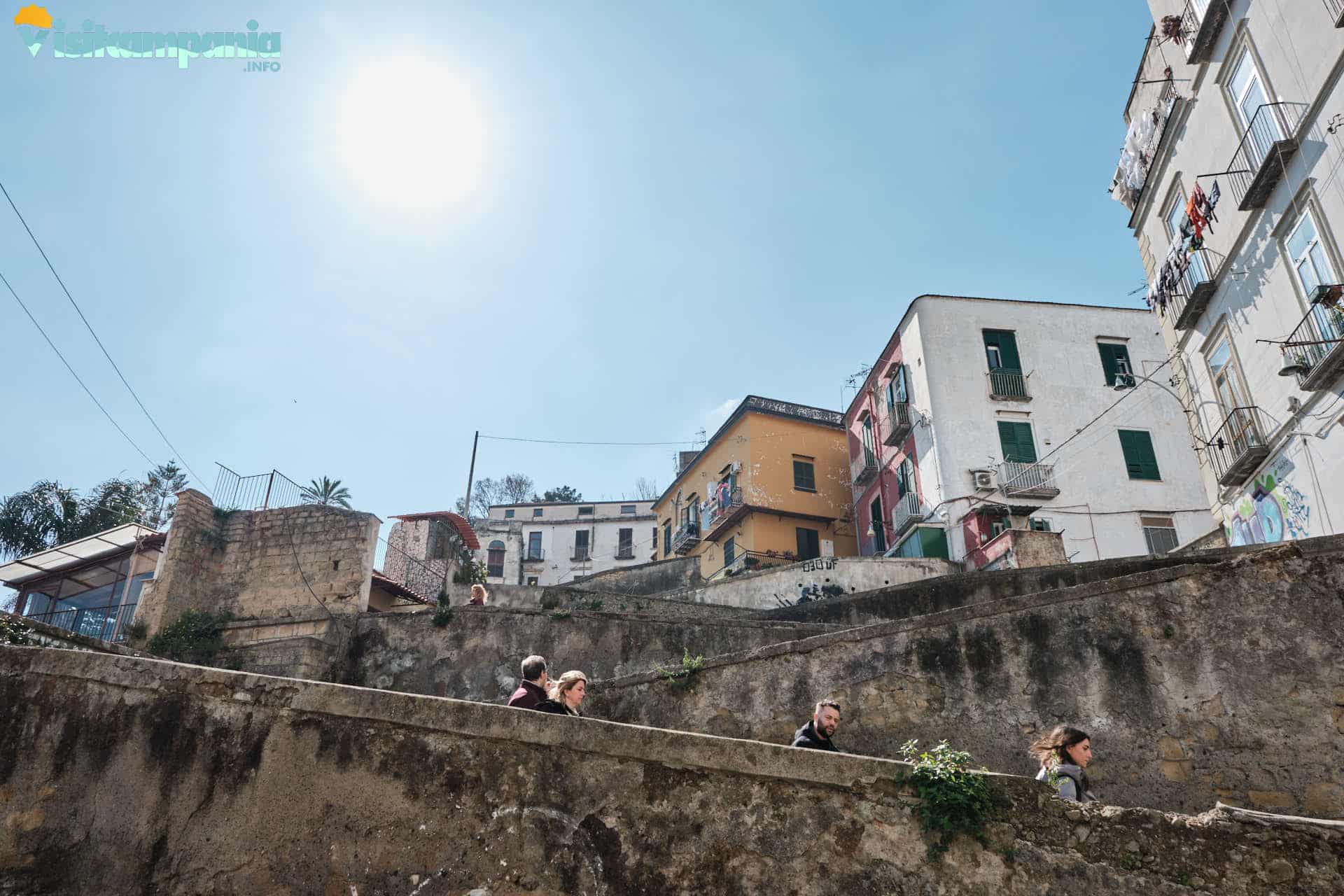
Leaving the Chartreuse, right in Largo San Martino we find the staircase of Via Pedamentina, a suggestive and romantic walk and final stop on our itinerary from Toledo to Vomero. 414 steps that in a few minutes take us to Corso Vittorio Emanuele and then, through the picturesque Montecalvario district, back to the Toledo metro station, our starting and arrival point.
Tips and curiosities
- To date, March 2023, on the first Sunday of the month access to state museums is free. Considering that even the Gallerie d’Italia adhere to the initiative, although private, on the first Sunday of the month the entire itinerary will cost you only the price of the funicular ticket (€ 1.20 per person). Check the adhesion to the initiative on the websites of the individual museums and book access;
- You can, of course, modify the itinerary to your liking. For example, you could stretch beyond the Augusteo station, in via Toledo, until you look out over Plebiscito square before taking the funicular towards Vomero;
- Another pleasant detour could be a walk on the elegant and commercial Via Scarlatti and Via Giordano al Vomero, just out of the funicular and before heading towards Sant’Elmo Castle;
- The three museum attractions are accessible to disabled people with motor impairments. The funicular is also accessible while, of course, the Via Pedamentina is not. This means that the itinerary is still usable, with adaptations, even to people with motor disabilities. You could, in fact, reach the Gallerie d’Italia by car by parking quietly in the blue lines and showing the appropriate mark. Always by car, you could then reach the Vomero and visit the castle and the charterhouse;
- Finally, I would like to point out that the Vomero stairways that connect the funicular station of Piazza Fuga to the Morghen station, Montesanto funicular, towards Sant’Elmo Castle are flanked by escalators;


